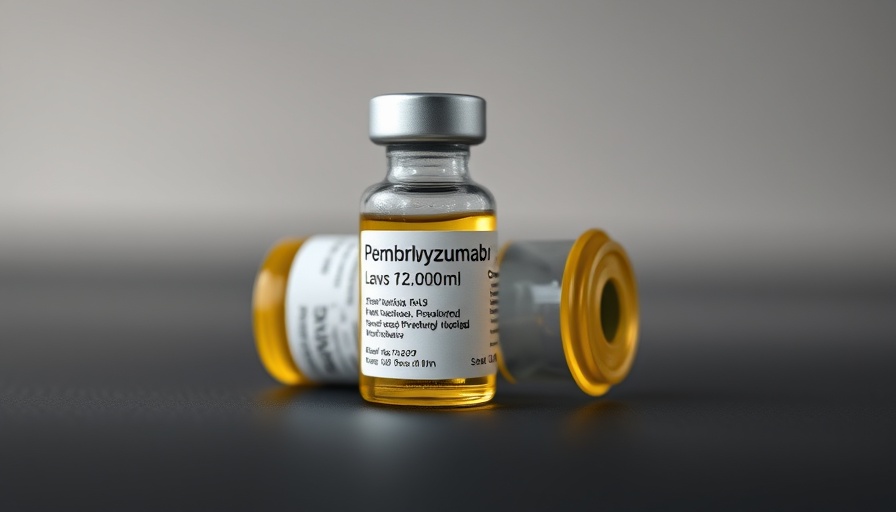
Unlocking Hope: The Promise of Pembrolizumab in HNSCC
In a groundbreaking advancement in cancer treatment, the recent findings from the KEYNOTE-689 trial highlight the substantial benefits of adding pembrolizumab, a checkpoint inhibitor, to the standard treatment regimen for locally advanced head and neck squamous cell carcinoma (HNSCC). This pivotal research, shared by lead investigator Dr. Ravindra Uppaluri at the AACR Annual Meeting 2025, points to a potential shift in the therapeutic landscape for patients facing this daunting diagnosis.
Progress Made: Pembrolizumab’s Impact on EFS
According to the trial, patients who received pembrolizumab alongside standard treatment experienced a dramatic increase in event-free survival (EFS). At a median follow-up of 38.3 months, EFS in the pembrolizumab group soared to 59.7 months compared to just 26.9 months for those receiving standard care alone. This striking difference illustrates not only the efficacy of pembrolizumab but also underscores the urgent need for evolving treatment protocols for HNSCC.
A New Standard of Care
With pembrolizumab's earlier approvals for unresectable/metastatic HNSCC, the approval for a perioperative indication is highly anticipated, with the FDA review expected to conclude by June 23, 2025. The potential for shifting the standard of care reflects a significant leap forward, as described by Robert Ferris, MD, PhD, demonstrating a passionate advocacy for continuous advancements in oncology.
Understanding the KEYNOTE-689 Trial: Methods and Findings
The KEYNOTE-689 trial meticulously randomized 714 patients with stage III-IVa HNSCC, primarily focusing on those who were human papillomavirus–negative. The innovative regimen included two cycles of neoadjuvant pembrolizumab before surgery, followed by more cycles in conjunction with radiation and chemotherapy. This comprehensive approach provided additional insights, showing lower rates of high-risk surgical features in patients receiving pembrolizumab, thus promoting better management outcomes.
Caution and Optimism: Assessing the Findings
While these results are incredibly promising, Dr. Ferris also recognizes that there are still questions to be addressed. A competitive hazard ratio for EFS benefits indicates a need for deeper exploration into which patient populations may derive the most significant advantages from this combination therapy. Furthermore, maintaining patient quality of life alongside clinical efficacy must remain a priority in this evolving treatment paradigm.
The Broader Implications for HNSCC Patients
This development in treatment options is not merely a statistic; it embodies hope for thousands diagnosed each year with HNSCC, a disease that has historically had limited effective therapies. Patients, caregivers, and healthcare providers alike have a stake in understanding these advancements as they prepare for the next generation of treatment strategies. With a major pathologic response observed in several patients, it’s encouraging to note that promising outcomes can lead to more personalized treatment pathways.
Next Steps: Preparing for Pembrolizumab
As we await the FDA's decision, now is the time for patients and their families to consider the broader implications of these results. Engaging in conversations with oncologists about potential enrollment in clinical trials, discussing side effects, and preparing for pre-treatment evaluations can greatly enhance the patient experience. Being actively involved in one’s treatment journey is crucial in navigating these complexities.
Conclusion: Embracing Change in Treatment Protocols
Overall, the integration of pembrolizumab into the standard treatment of HNSCC represents not only a clinical advancement but also a beacon of hope for patients. As the oncology community continues to investigate and validate these findings, it is paramount that we collectively advocate for improved patient access to the latest therapies, facilitating the most optimal care possible. We encourage those interested in learning more about this treatment journey to engage with their healthcare providers as this crucial market evolves.
 Add Row
Add Row  Add
Add 



 Add Row
Add Row  Add
Add 
Write A Comment